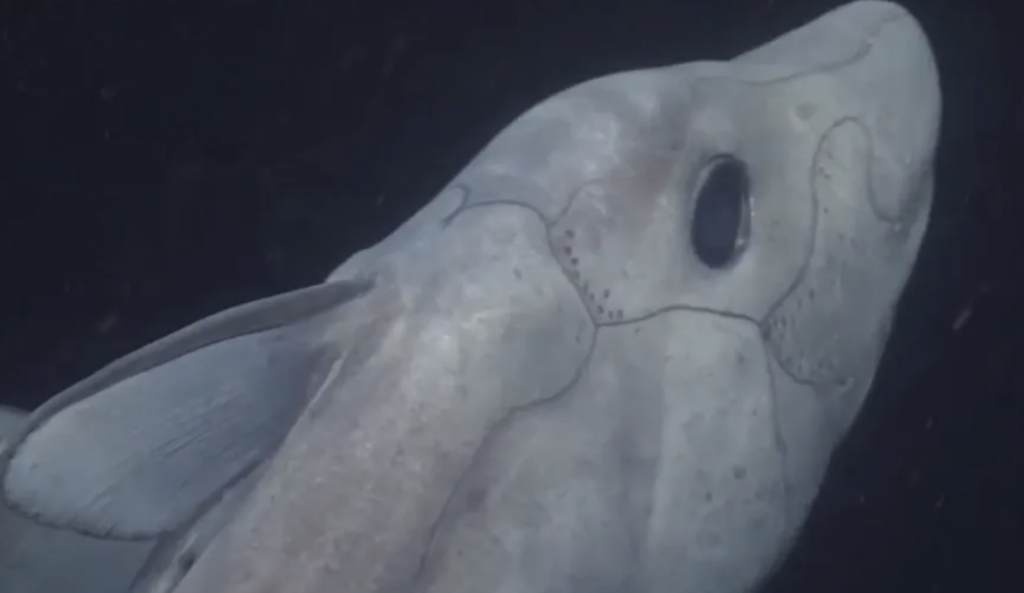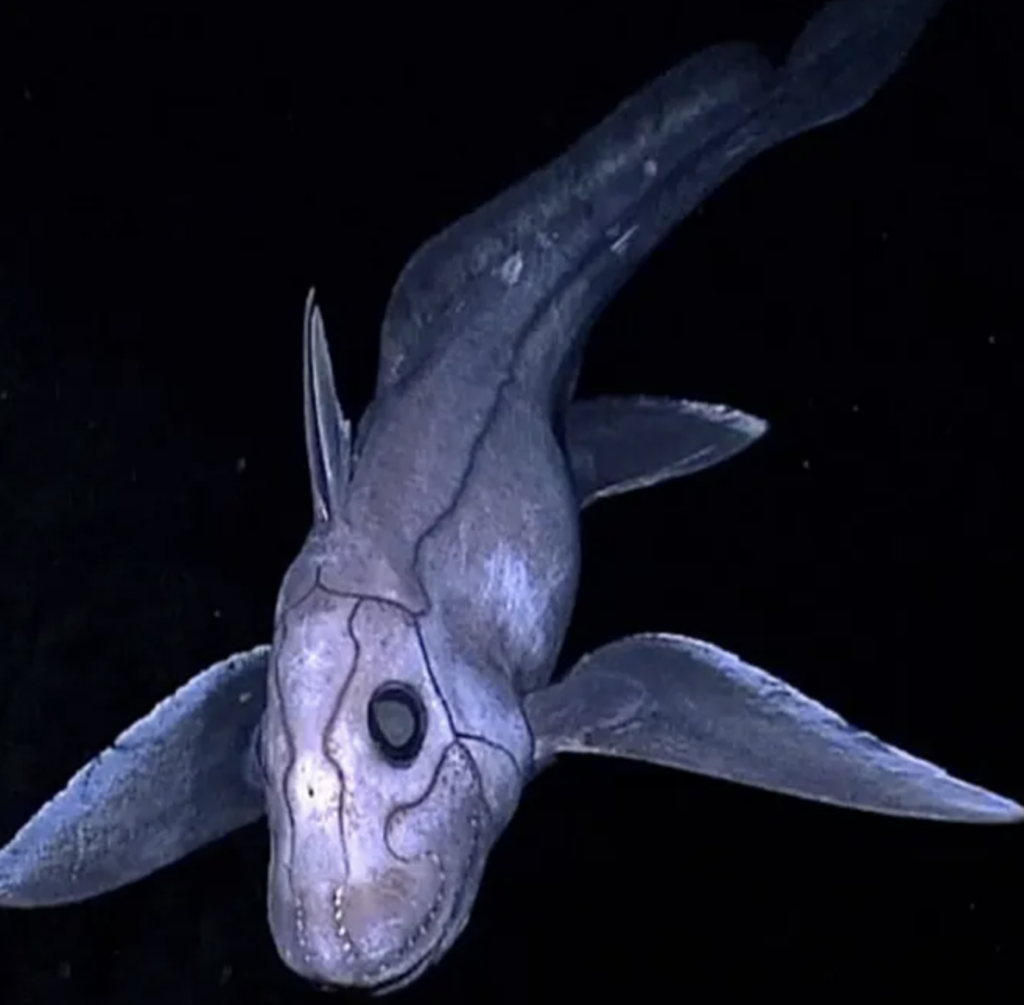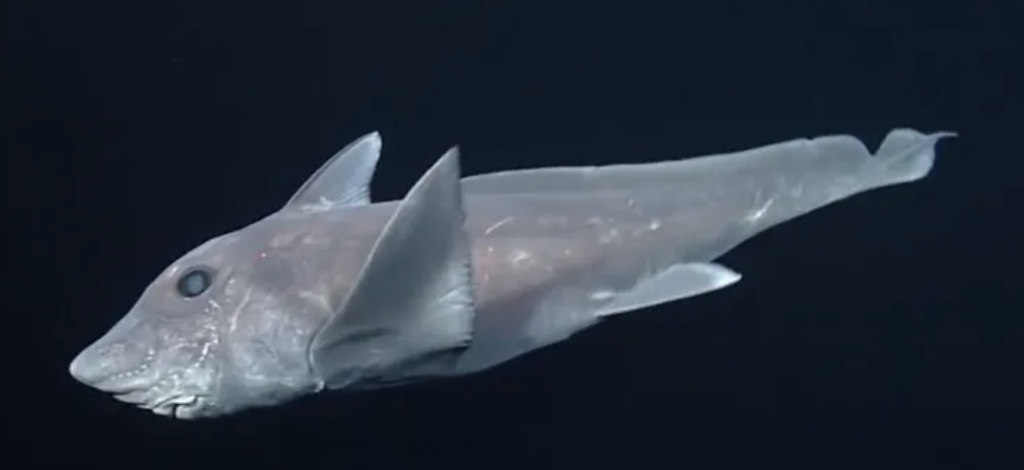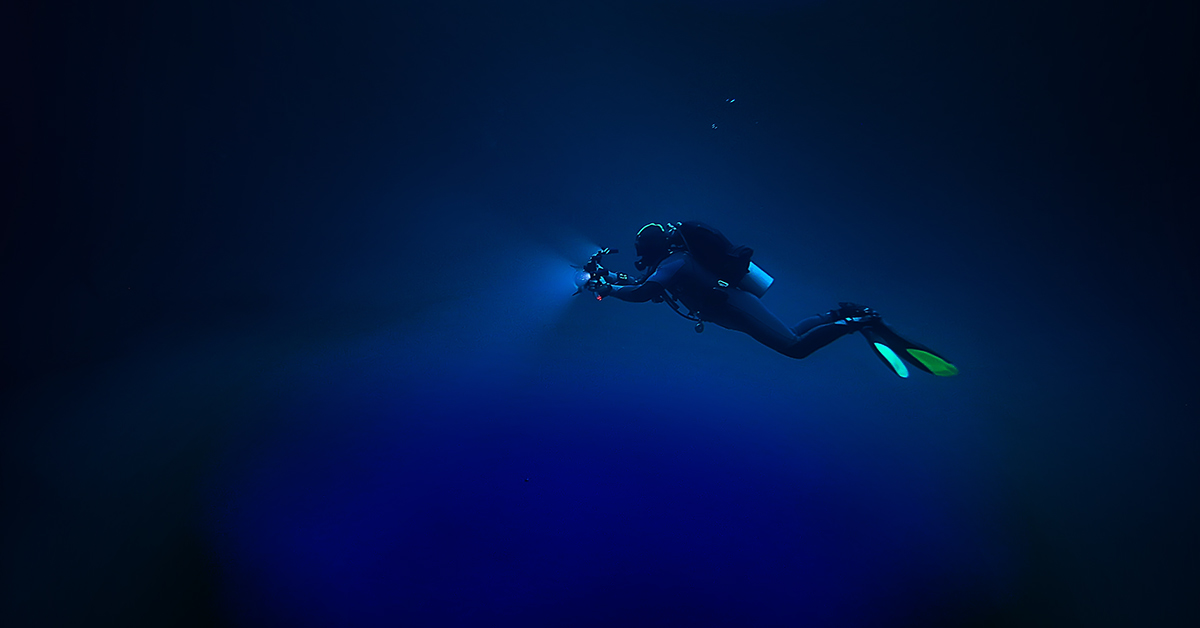The midnight zone of the ocean is so deep no light can reach it. It’s so far in and dark researchers have yet to fully explore it. They’ve already found nightmarish fish like angler fish, viperfish, and bristlemouth fish. However, there are so many more terrors to uncover. And in 2016, a new monster appeared on camera for the first time: the ghost shark. However, a study from December 2020 found that this newfound species may be at risk of extinction.
The Rarely Seen Ghost Shark Caught on Camera
Ghost sharks are technically chimaeras, which are close relatives of sharks and rays. There are some distinctions between chimaeras and sharks. Chimaeras’ upper jaws attach to their skulls. Meanwhile, sharks have rows of teeth while chimaeras have mineralized tooth plates. Also, male chimaeras have retractable sex organs on their foreheads that sharks do now. Other than that, not much is known about these deep-sea phantoms.
The first videoing of a ghost shark took place in the depths of up to 6,700 feet in the waters off of Hawaii and California. But the researchers were not searching for ghost sharks. “The guys doing the video were actually geologists,” said Dave Ebert. He’s the program director for the Pacific Shark Research Center at Moss Landing Marine Laboratories. “Normally, people probably wouldn’t have been looking around in this area, so it’s a little bit of dumb luck.”

The researchers contacted Ebert and other chimaera experts to identify a new-looking ghost shark that did not resemble other known ghost shark species. The team examined the video and theorized the creature to be a pointy-nosed blue chimaera, which is usually found near New Zealand and Australia. This video was the first time this fish was seen thriving in its natural habitat in the Northern Hemisphere.
The video also potentially taught the researchers something new about the species: It seemed to love the camera and the bright light. “It’s almost a little comical,” said Ebert. “It would come up and bounce its nose off the lens and swim around and come back.”
Plus the background could mean that pointy-nosed blue chimaeras prefer rocky outcrops to flat-bottomed terrain that other ghost shark species seem to prefer. But whether you call them ghost sharks, chimaeras, or ratfish, Dominique Didier, a marine biologist and chimaera expert at Millersville University in Pennsylvania referred to them as “just one of the many beautiful and poorly studied species that shares this planet with us.” [1]
Read: This Man Was Only Filming Seagulls, but He Suddenly Captures an Incredible Once-In-A Lifetime Scene
The Origins of the Chimaeras
A skull of a chimaera has been dated to 280 million years old. And this discovery has helped scientists determine how these creatures are related to sharks. The skull itself was a rare find; since the fish’s skeleton is cartilage instead of bone, it rarely turns into a fossil.
“Chimaeras are ancient specialists, now anchored within a large and very distinctive group of early shark-like fishes that thrived in the late Paleozoic era,” said the study’s lead researcher Michael Coates, a professor in the Department of Organismal Biology and Anatomy at the University of Chicago. “We now have a glimpse of the preconditions from which modern chimaeras evolved, suggesting that the large eyes of these early sharks predisposed chimaeras for low-light, deep-sea habits.”

Still, there’s more to discover about what ghost sharks eat, how they reproduce, or how long is their lifespan. But the washed ashore chimaeras had taught scientists that they have cartilaginous skeletons, just like sharks. However, now that researchers more about the creatures’ habitats, they where to find them for further studying. [2]
Read: Influencer Picks Up And Licks ‘Jellyfish’, Not Realizing It’s A Deadly Portuguese Man o’ War
Species Under Threat
A 2020 study in the Journal Fish and Fisheries went further into detail about ghost sharks. Namely, the researchers assessed the species’ risk of extinction. Fortunately, they considered ghost sharks “a low proportion of threatened,” which categorizes them as “least concern”. However, the research admits data deficiency and missing information on the creatures’ biology. Therefore, the study requires further research and monitoring on the ghost sharks for a more detailed assessment. [3]

Now, their more famous shark brethren have been at risk for years. In fact, three-quarters of the shark species are threatened with extinction. The number of sharks in the oceans has fallen 71% in just over 50 years. This is mainly due to overfishing, for instance, for the purpose of shark fin soup. For instance, the oceanic whitetip shark and great hammerhead sharks are now classified as critically endangered according to the International Union for Conservation of Nature (IUCN).
“Oceanic sharks and rays are vital to the health of vast marine ecosystems, but because they are hidden beneath the ocean surface, it has been difficult to assess and monitor their status,” said Nathan Pacoureau of Simon Fraser University. “Our study represents the first global synthesis of the state of these essential species at a time when countries should be addressing insufficient progress towards global sustainability goals. While we initially intended it as a useful report card, we now must hope it also serves as an urgent wake-up call.” [4]
Keep Reading: World’s Largest Sea Turtle Emerged From The Sea And It Was Amazing
Sources
- Jason Bittel. “Deep-Sea Ghost Shark Filmed Alive In Ocean For First Time.” National Geographic. December 15, 2016
- Laura Geggel. “Origins of Elusive ‘Ghost Shark’ Revealed.” Live Science. January 4, 2017
- Brittany Finucci, Jessica Cheok, David A. Ebert, Katelyn Herman, Peter M. Kyne, Nicholas K. Dulvy. “Ghosts of the deep – Biodiversity, fisheries, and extinction risk of ghost sharks.” Fish and Fisheries. December 2, 2020
- Helen Briggs. “Extinction: ‘Time is running out’ to save sharks and rays.” BBC. January 27, 2021

